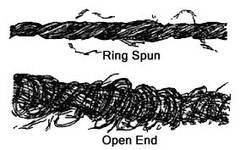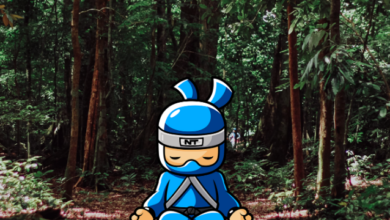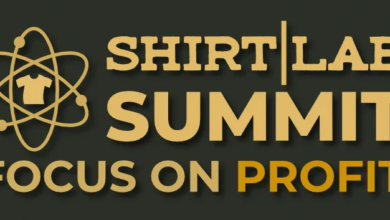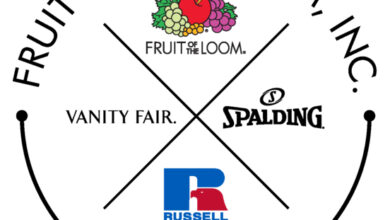
At DTG Connection, we are frequently asked where to get shirts and the best T-shirts for direct-to-garment printing (DTG). The “best T-shirt for DTG” question is a topic where you can ask 10 people, and you might get 10 different answers. Some might be interested in the lowest cost, while others are looking for a garment that produces the highest-quality prints. Others look for that soft feel in their garments.
As a result, ranking a list of garments from good to best for direct-to-garment printing would not be as useful as helping you understand the factors that affect the performance of a DTG T-shirt. With this information, you’ll be equipped to select the right T-shirt to satisfy everyone’s needs.
Selecting the ideal T-shirt for your DTG business comes down to these important fabric factors.
Ring-spun cotton

When you are printing a photograph on paper, we all know that you’ll get a much better result if you use glossy photo paper. The same concept is true with garment printing, except in the case of DTG, we use ring-spun cotton to ensure the highest quality image and durability. Ring-spun cotton is created differently than regular cotton fabrics.
Regular (or open-ended) cotton uses fibers that are twisted together to make yarn. This yarn is then woven together to make the shirt. In contrast, ring-spun cotton sends the yarn through a spinning process to soften and straighten the fibers, allowing for a tighter weave. As a result, ring-spun cotton T-shirts last longer and feel softer to the touch. They also give you the best results when printing with DTG because it has a more flat/smooth finish.
Combed cotton
When printing DTG, you want to be working with ring-spun combed garments. Combing the garment helps align the threads and reduce the number of fibers sticking up or out, which affects the print quality. Some manufacturers also take an additional step to run the fabric through an enzyme wash that helps to further remove fly away fibers that impact the print quality on a DTG print.
100% Cotton vs. blends
The ink that is used in DTG printing is specially formulated to not only work within the internal components of the printer but also to adhere to natural fibers. Simply put, your best results will come from 100% cotton T-shirts.
Many suppliers and manufacturers have amazing 50/50 polyester/cotton blended shirts that produce excellent results with DTG. However, not all manufacturers are the same because they use different types of polyester, different blends, coatings, and processes. For this reason, it isn’t easy to give a precise answer on which blend percentages are acceptable for DTG. In general, it is possible to print with as much as 50% polyester when printing with white ink.
We highly recommend you test print and wash any new garment, so you know how it will perform for your customer after a few washes. Some additives, such as silicone softeners used by manufacturers to make a garment feel extra soft, can have a negative effect on the DTG print and washability.
100% polyester
DTG printing on 100% polyester shirts still comes with some challenges. If you are printing on light-colored garments that do not need white ink, you will still have great results that hold up in the wash. However, if you are printing on dark shirts with over 50% polyester, you will start to have some challenges. You will find that every few months, someone will come out and say they’ve “solved the dark poly problem!” However, this “solution” often involves a complicated and time-consuming process that often is not practical for most businesses. Also, quite often, these so-called solutions do not include a proper wash test. Prints look beautiful off the printer; however, they fall apart in the wash. Results will also vary depending on the garment itself. A solution that works on one garment might have different results on an other brand or model.
I am 100% confident the industry will ultimately solve this problem, but it’s just not there yet. With that said, explore the different blends, pretreats, and techniques out there and see what works for you.
Choosing the right T
Printing is subjective to you and your customer. It is always important to keep perspective of what the end-user wants. Your goal is to produce quality garments that customers want to buy. Keep this in mind when selecting the ideal garment for your customers. Ask yourself these four questions:
- Does the garment meet my customer’s needs regarding look and feel?
- Am I able to print a good print that will hold up in the wash?
- Am I able to purchase the blanks, pay for labor, and sell at an acceptable margin?
- Will my customer buy the garment and be happy with their purchase after the wash?
If you can answer yes to all of these questions, then it’s a success! Don’t fall into the trap of nitpicking your output to such an extent that no customer will ever notice the slight variations between the brands of T-shirts. If it works for you and your customer, then who cares what the so-called experts say online.
Finally, it’s crucial to test garments with blends of polyester that are new to you. Ensure they meet your needs before you buy a full inventory and waste time printing a job for a customer.




